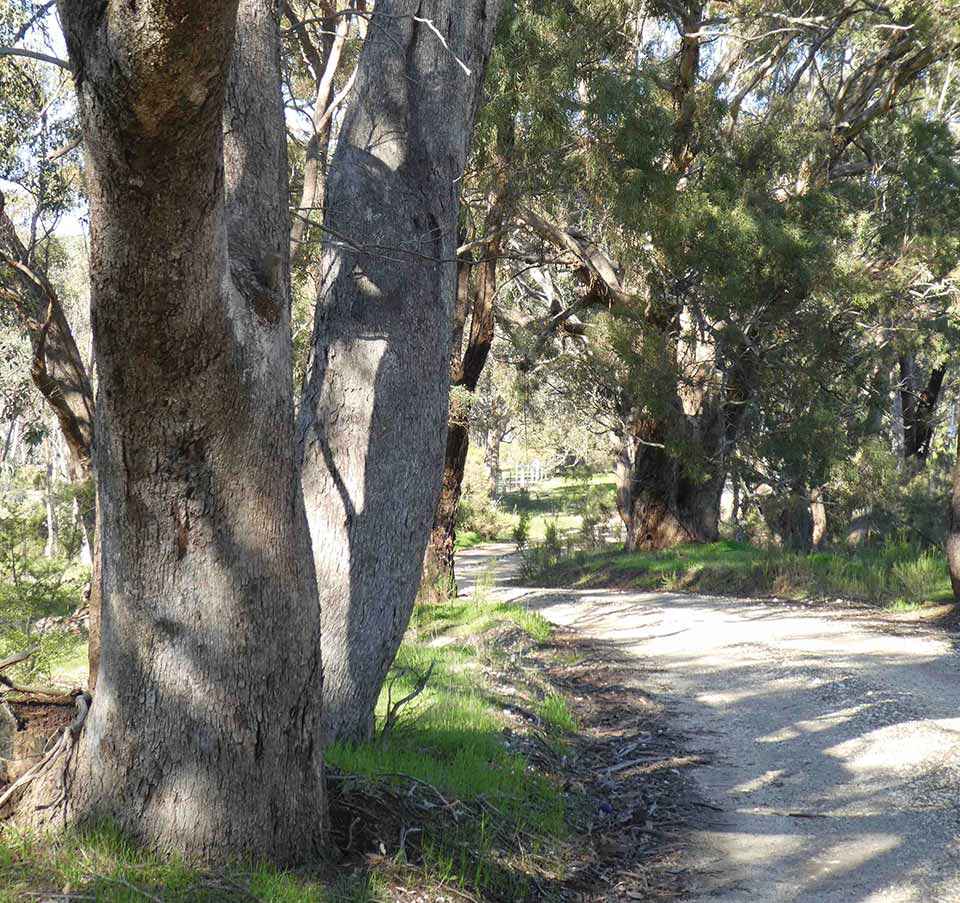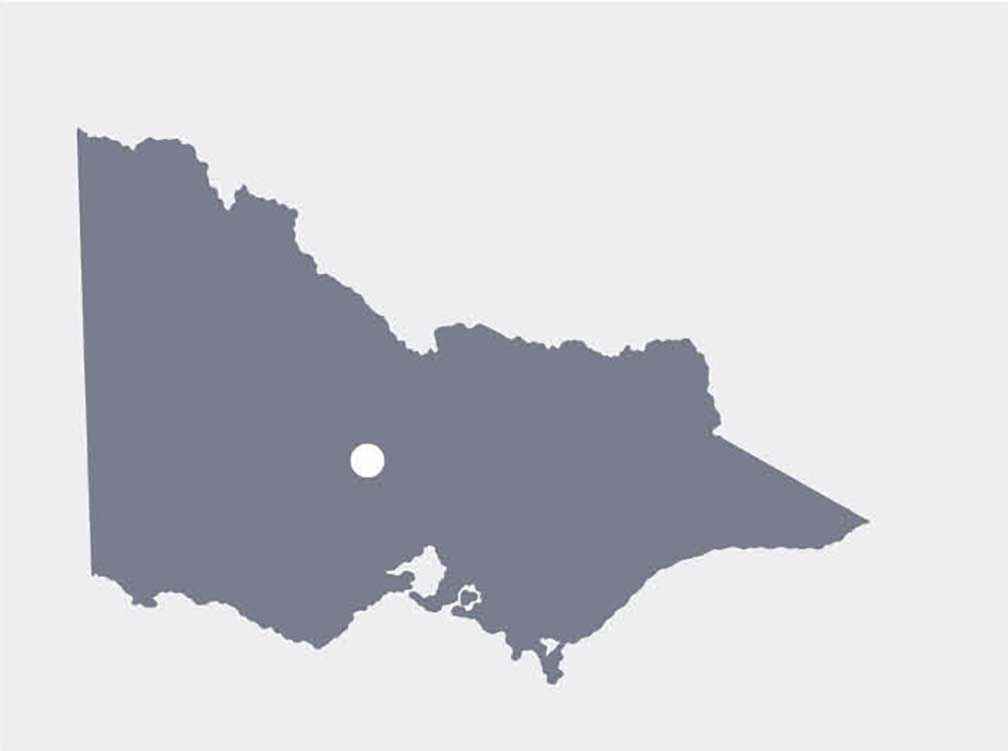Victorian Landcare Magazine - Spring 2020, Issue 79

In 2017 the Maldon Urban Landcare Group (MULGA) set out to conduct a major survey of the indigenous eucalypts that have been growing in the area since before European settlement – pre 1852. We spent two years surveying 308 eucalypts on roadsides and private and public land.
Each tree was photographed and recorded by species, its diameter over bark at 1.3 metres and GPS location.
The species recorded were grey box (Eucalyptus microcarpa), yellow box (Eucalyptus melliodora), red box (Eucalyptus polyanthemos subsp. vestita), long-leaved box (Eucalyptus goniocalyx), yellow gum (Eucalyptus leucoxylon subsp. pruinosa) and one red stringybark (Eucalyptus macrorhyncha).
We calculated the age of the trees using an average growth rate of 3.5 millimetres a year across the trunk diameter for box-ironbark forest trees in the Maldon area that was used in a report completed for the Environment Conservation Council in 2001.
Our survey revealed an estimated age range of 170 to 545 years across the trees. We found that 87 per cent of the trees had an estimated age of 200 years or greater. The tree data has been entered on the Victorian Biodiversity Atlas.
All of the six species listed above occur along our roadsides, in fact 199 of the eucalypts surveyed grow along 30 kilometres of roadsides at the urban edge of Maldon. The majority of our roadside trees are grey box (40 per cent) and yellow box (37 per cent). Eighty-two per cent of our roadside eucalypts have an estimated age of 200-399 years. There are eight trees with an estimated age of 400 years or greater. Five of these occur along Sandy Creek Road, including the oldest roadside tree surveyed, an amazing yellow box with an estimated age of 545 years.
It is remarkable that these roadside eucalypts have survived. By 1854, during the goldrush, the Maldon population numbered 20,000. The landscape was turned up from mining and the forests were aggressively cleared. By 1890 the surrounding landscape was almost completely denuded of trees. All the roadsides we surveyed were active goldmining areas, so we don’t know why the trees were spared – perhaps to provide shade for people or horses.
MULGA is working to achieve long-term protection for these important eucalypts under the Mt Alexander Shire Council’s (MASC) Planning Scheme, and/or the National Trusts of Australia’s Register of Significant Trees.
According to a MASC conservation value and weed distribution map from 2007-2014, approximately 10 per cent of the roadsides we surveyed were classified as having medium conservation value. The rest were classified as low conservation value, possibly as there is minimal indigenous understorey and groundcover. The significance of the pre-1852 eucalypts was not acknowledged.
It is rare to see a remnant eucalypt in the bushland and forests surrounding Maldon today. The narrow corridors of living treasures along the roadsides we surveyed are very significant and must have greater protection.
Bev Phillips is Secretary of MULGA.
For more information email maldonurbanlandcare@gmail.com

Above: Location map - Maldon